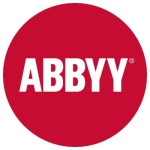What is our primary use case?
We are using it to automate business processes in the organization.
How has it helped my organization?
UiPath has impacted our operational efficiency quite a lot. There are a lot of scenarios where it has helped the end users. We also have benefited financially from it. We have streamlined the processes to an extent. We initially started with a basic data migration process, and now, we have our own intelligent automation and hyper-automation framework. We just get the requirement, put it in the framework, and start automating. We have progressed a lot.
UiPath enables us to implement end-to-end automation. There are certain instances where we do not get end-to-end automation, but those are the things that are out of RPA's capabilities.
End-to-end automation is important because we can showcase our capability more efficiently in front of our management and the client. We can show that something can be 100% automated if there is a use of 100% automation.
They have UiPath Academy. When UiPath was new, we did not have any online resources to go and learn. The YouTube community was small. There were no courses on Udemy or any of the online platforms. The offline platforms were also minimal. UiPath Academy was one place where we could go and learn and prepare for the exam. I got certified when UiPath certifications were free. I have done all the learning from UiPath Academy. As I move up in my role and responsibilities, if I want to learn a few more things, UiPath Academy is still the best place. You get a very crisp and clear understanding of everything.
We use UiPath’s artificial intelligence and machine learning capabilities for hyper-automation. In my understanding, RPA in the initial days was limited to redundant process automation, whereas now, the use of AI Fabric and other components makes the automation more intelligent. We can add decision-making to existing automation. There were many processes where we had stalled the process just because the next step was a decision-making step, and someone had to come and make a decision to move forward. Now, we have our own AI team to build the code that can make decisions on behalf of a person and also learn from the existing behaviors. That helps quite a lot.
UiPath saves time. It saves about 50% of the time. It never saves 100% of the time because we also spend a lot of time maintaining and doing enhancements to the process. Processes are never stable.
We have integrated it with multiple tools. The outcome has been very good. There have been challenges at times with the development, but the integration has been smooth so far.
What is most valuable?
Computer Vision is one good feature. AI Fabric is another good feature. The holistic Orchestrator platform is another feature that is very useful.
The RE Framework provided by UiPath is quite extensive. It solves a lot of problems and gives us a lot of time back. We do not have to create our own framework.
UiPath is more user-friendly than other RPA solutions that I have used. UiPath also has the biggest community.
What needs improvement?
Automation Hub needs to improve a lot. About two years back, it kept on crashing. It has improved a lot. We use it but not to a great extent. We try to build our own dashboards by using any of the data analytics tools.
It should give real-time data, and the integration with the servers is not that great. It can be because of the infrastructure that we have.
They can also consider integration with other automation tools because nowadays, a company does not have one automation tool or RPA tool. A company has multiple RPA tools. They can think of integrating the data from other automation tools in one automation hub so that it becomes centralized.
For how long have I used the solution?
I have been using UiPath for close to seven years.
What do I think about the stability of the solution?
UiPath is quite stable. I would rate it a nine out of ten for scalability. It does crash sometimes. That could be because of the infrastructure we are using.
The reliability of any process that goes to the end user is tested with a set of data. We do rigorous testing because, at the end of the day, any error in production ends up in a financial loss, so we test the automation that has been built to quite an extent.
What do I think about the scalability of the solution?
I would rate UiPath a seven out of ten for scalability. No technology is 100% scalable. As technology evolves, new features, such as GenAI features, need to be added. Scalability-wise, it can never go to a ten. Another reason why I rated it a seven is that I want Automation Hub to be scaled to its full potential. It has not been scaled up properly. I have got this feedback from different people across the organization.
The organization I belong to works on the use cases for building automation for given processes. We have around 15 developers doing this work.
How are customer service and support?
I would rate UiPath support a ten out of ten. They have been quite supportive when we have raised any query with them.
Which solution did I use previously and why did I switch?
I have been in the automation field for the last 12 years. I started with RPA with Blue Prism. I have worked with almost all main RPA tools such as Power Automate, Automation Anywhere, etc. I find UiPath to be the most user-friendly. There is the ease of having all the activities in the same panel. You can have the Studio setup and you can review the code as well with the analyzer. It gives a lot of flexibility when you are developing.
The one feature that is very good is that the marketplace is open. People can build their own set of activities and post them there, which is very useful. I myself have built a lot of activities. I have also used activities by other developers to complete my work. The marketplace is very helpful.
UiPath has the biggest user community. Its community is bigger than Power Automate, Automation Anywhere, and Blue Prism. Other than the community, there are also several groups. There are a lot of developers. If you are stuck with any issue, which is quite common, someone will have a solution for it.
Developing automation with UiPath is much easier compared to Power Automate, Automation Anywhere, and Blue Prism.
How was the initial setup?
The deployment is handled by another team. I do not handle the deployment because the infrastructure team handles it. It should be a one-man job. It is not that difficult.
The deployment duration of a process depends on how big the process is and how much time and resources it requires for development. Usually, it takes two to three weeks. It can also take ten weeks depending on the process.
All tools require maintenance in terms of upgrades, but that is probably handled by UiPath. We only maintain our own processes. If there are some changes to the selectors or any of the UI components, we have to update the project.
What was our ROI?
With RPA, it takes one or two years to see an ROI. It is not cost-efficient till then. When you start building hundreds of processes and utilizing the full capacity of the bots to work 24 hours, you get a good return on investment. Initially, it was expensive, but as we scaled up, we could see an ROI. We have seen a good profit.
Initially, the ROI is less. It is about 5% to 6% per year, but as the processes mature, the headcount reduces, and the human intervention also reduces. It eventually moves to 30% to 40% ROI.
What's my experience with pricing, setup cost, and licensing?
It is the most user-friendly RPA platform, but it is also the most expensive RPA platform.
What other advice do I have?
I would recommend UiPath to others because it is the most user-friendly. It is also developer-friendly because of the community. It also works across systems. These are the three reasons for recommending it.
We run a roadshow across the organization to understand which processes are redundant. We try to understand which part of a process can be automated by using the general RPA automation and only one tool. We also categorize them in terms of what can go under intelligent automation where a certain amount of decision-making is required. Another category is hyper-automation where we try to understand how to include different tools, such as machine learning code, AI code, NLP data set, or data mining set. If we have an existing tool for data mining and process mining, the final steps can be automated. These are three major criteria. For basic automation, we try to assess the type of automation. Is it desktop automation? What kind of resources are required? Do we need an attended automation or an unattended automation? Based on my experience, almost all of them are unattended automation. We then try to pull in the use cases, prioritize them, and start automating.
UiPath keeps on enhancing its product. Four years ago, there was no AI Fabric or Automation Hub, and now, we have all those things. They help a lot in delivering the project and having a prototype view for all the projects that are running.
Overall, I would rate UiPath an eight out of ten.
Which deployment model are you using for this solution?
On-premises
Disclosure: My company does not have a business relationship with this vendor other than being a customer.























